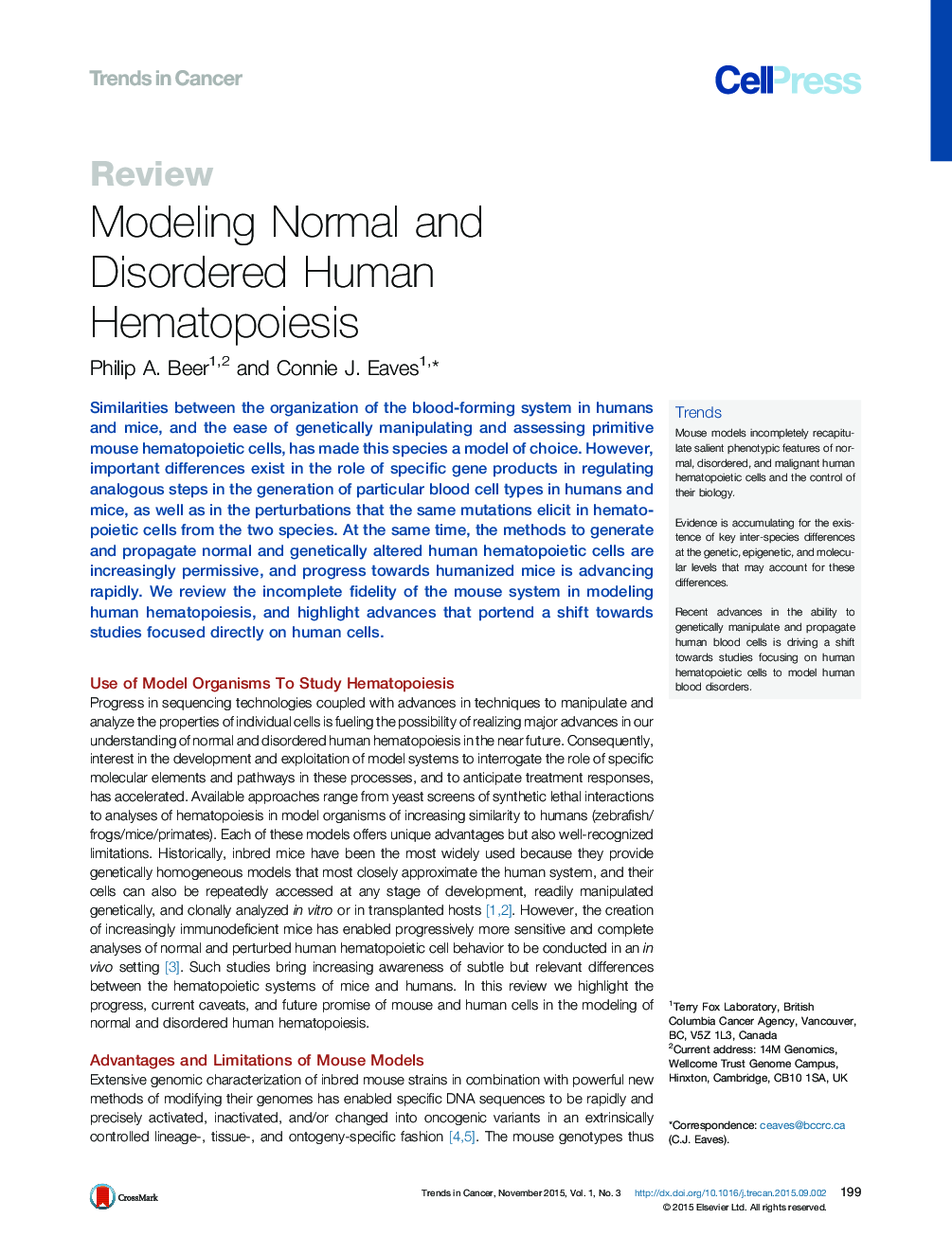| کد مقاله | کد نشریه | سال انتشار | مقاله انگلیسی | نسخه تمام متن |
|---|---|---|---|---|
| 2164120 | 1091479 | 2015 | 12 صفحه PDF | دانلود رایگان |
عنوان انگلیسی مقاله ISI
Modeling Normal and Disordered Human Hematopoiesis
ترجمه فارسی عنوان
مدل سازی هماتوپیزیسم انسانی طبیعی و اختلال
دانلود مقاله + سفارش ترجمه
دانلود مقاله ISI انگلیسی
رایگان برای ایرانیان
ترجمه چکیده
شباهت بین سازماندهی سیستم تولید خون در انسان و موش و سهولت انتقال ژنتیکی و ارزیابی سلول های اولیه خون موش صحرایی این گونه را به عنوان یک مدل انتخابی تبدیل کرده است. با این حال، تفاوت های مهم در نقش محصولات خاص ژن در تنظیم قدم های مشابه در تولید انواع خاص سلول های خونی در انسان و موش و همچنین در اختلالاتی که جهش های مشابه در سلول های خونساز از دو گونه رخ می دهد وجود دارد. در عین حال، روش های تولید و انتشار سلول های خونخان انسانی طبیعی و ژنتیکی تغییر یافته به طور فزاینده ای اجازه می دهد و پیشرفت به سمت موش های انسانی به سرعت در حال پیشرفت است. ما وفاداری ناقص سیستم ماوس را در مدل سازی خونریزی های انسانی بررسی می کنیم و پیشرفت هایی را نشان می دهد که تغییراتی را به سوی مطالعات متمرکز بر سلول های انسانی متمرکز می کنند.
موضوعات مرتبط
علوم زیستی و بیوفناوری
بیوشیمی، ژنتیک و زیست شناسی مولکولی
تحقیقات سرطان
چکیده انگلیسی
Similarities between the organization of the blood-forming system in humans and mice, and the ease of genetically manipulating and assessing primitive mouse hematopoietic cells, has made this species a model of choice. However, important differences exist in the role of specific gene products in regulating analogous steps in the generation of particular blood cell types in humans and mice, as well as in the perturbations that the same mutations elicit in hematopoietic cells from the two species. At the same time, the methods to generate and propagate normal and genetically altered human hematopoietic cells are increasingly permissive, and progress towards humanized mice is advancing rapidly. We review the incomplete fidelity of the mouse system in modeling human hematopoiesis, and highlight advances that portend a shift towards studies focused directly on human cells.
ناشر
Database: Elsevier - ScienceDirect (ساینس دایرکت)
Journal: Trends in Cancer - Volume 1, Issue 3, November 2015, Pages 199-210
Journal: Trends in Cancer - Volume 1, Issue 3, November 2015, Pages 199-210
نویسندگان
Philip A. Beer, Connie J. Eaves,
